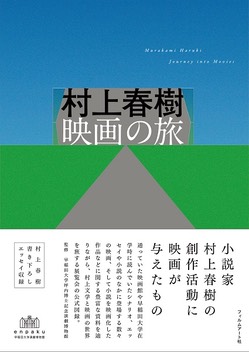
For one reason or another, I have participated in several projects focused on the novelist Murakami Haruki. After being one of Murakami’s hosts when he was given an honorary doctorate at Yale in 2016, I was invited to participate in an international symposium in France in 2018, which then became a book in Japan in 2020 (a French version is supposed to come out, but there’s been no recent news on that). So I was not completely surprised when a curator at Waseda University’s Tsubouchi Memorial Theatre Museum (fondly known as the Enpaku) asked me to write something for the catalog of an exhibition they were planning on Murakami’s relation to cinema.
Most of Murakami’s long novels have not been made into films, yet there are some splendid cinematic adaptations of his short stories, ranging from Yamakawa Naoto's A Girl She Is 100% (1983) and Ichikawa Jun’s Tony Takitani (2004) to Lee Chang-dong’s Burning (2018) and Hamaguchi Ryusuke’s Drive My Car (2021). What not every Murakami fan knows, however, is that, in addition to inserting a myriad of cinematic references in his novels, Murakami was actually a film studies major at Waseda in college, with plans to become a scriptwriter. He apparently spent a lot of time in the Enpaku reading scripts and even wrote a senior essay on the motif of travel in American cinema. His career eventually moved in a different direction, but he has never strayed too far from cinema.
The exhibition, which was titled in English “Murakami Haruki: Journey into Movies” (the webpage for the exhibition is here), explores many of these relationships. The catalog is both a collection of images of what was on display, as well as a set of essays by scholars such as Hase Masato and Ozawa Eimi, and interviews with Lee Chang-dong and Hamaguchi Ryusuke. The Enpaku page introducing it is here. The page says it is sold out, but you can still get it on Amazon.jp and other places.
My contribution was a rather straightforward outline of my stance towards thinking about the relation between literature and film, one that I have pursued in articles on Kawabata Yasunari, Akutagawa Ryunosuke, Tanizaki Jun’ichiro, and Murakami. One can relate an author like Murakami to cinema both through thinking about the film adaptations of his literature, and by considering how cinema influenced his writing. I promote a third way that does not treat either cinema or literature—either the particular film or the novel—as separate and given, but rather conceives of the two as continually in a relation of mutual constitution. To put it simply, the issue is not how cinema affects Murakami or how Murakami affects cinema, but rather how Murakami creates and forms cinema at the same time as cinema creates Murakami.
Here is the bibliographic information for my contribution:
- “Murakami Haruki ni okeru eiga to bungaku no koryu,” Murakami Haruki: Eiga no tabi. Ed. Waseda University Tsubouchi Shoyo Theatre Museum. Tokyo: Firumu Atosha, 2022. Pp. 86–90.

